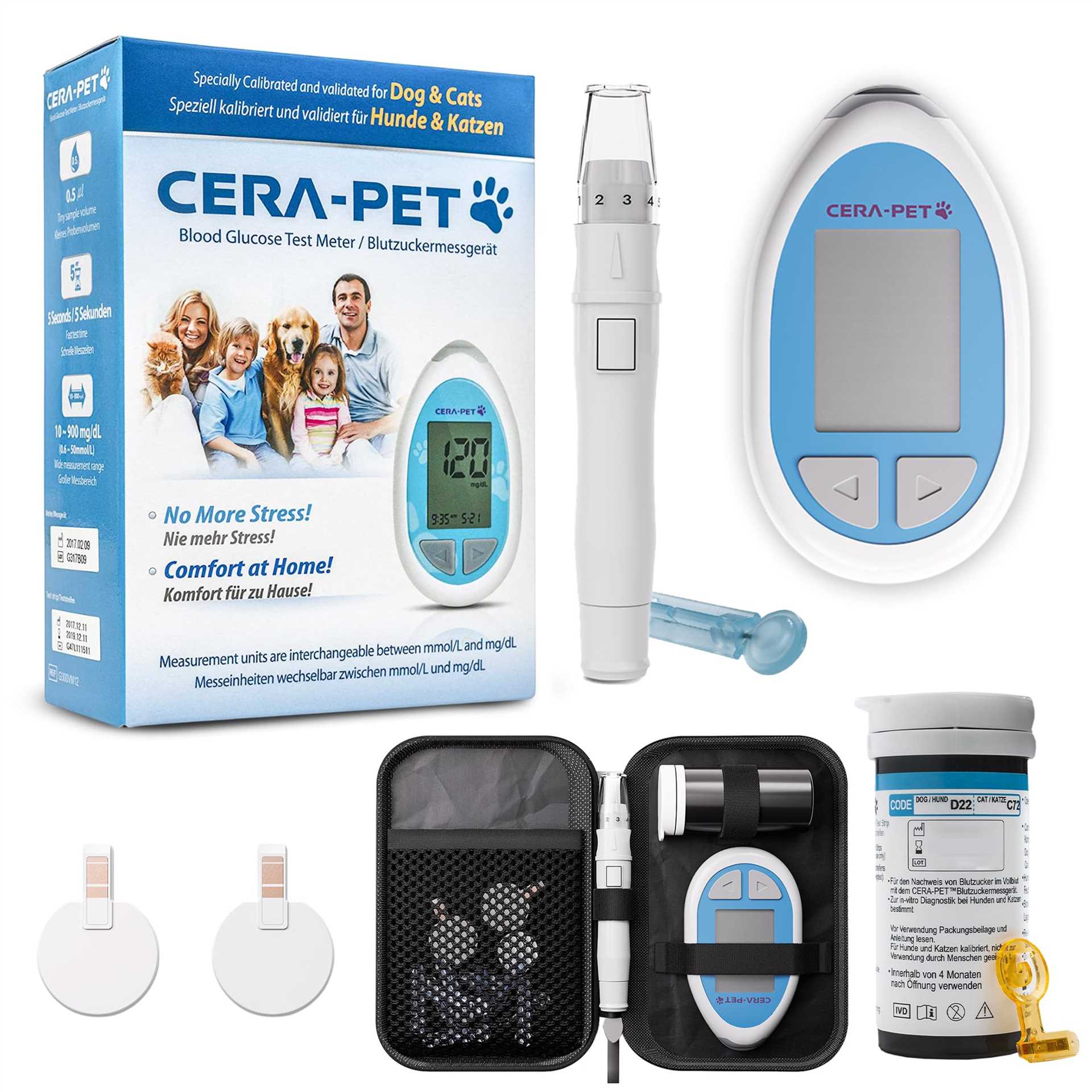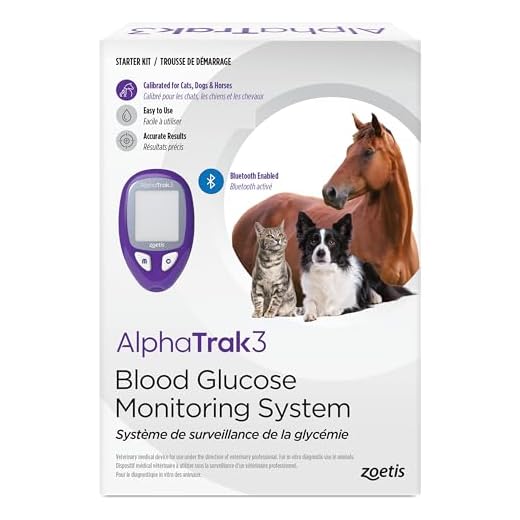




For accurate monitoring of your pet’s sugar levels, I recommend the AlphaTRAK 2. This device is specifically designed for small animals, ensuring precise readings that are critical for managing diabetes in pets. In this article, I will explore various options available on the market, focusing on their features, usability, and reliability.
This guide is intended for cat owners who want to take charge of their pet’s health by selecting the most suitable monitoring tool. You will find a detailed comparison of popular brands, key specifications, and user reviews that can help inform your decision.
By the end, you will have a clear understanding of which devices are effective for home use, their pricing, and how to interpret the results. This information will empower you to keep your beloved companion healthy and well-cared-for.
Best Blood Glucose Meter for Cats
Choosing a reliable device for monitoring sugar levels in feline companions is paramount for their health management. The right instrument offers accurate readings, ensuring timely intervention when necessary.
Look for units that require a minimal blood sample, as this minimizes discomfort for the animal. Devices with features such as memory storage for past readings and easy-to-read displays can enhance the experience for pet owners, facilitating better tracking of their pet’s condition.
Key Features to Consider
- Sample Size: Devices that need less blood are more suitable for frequent monitoring.
- Speed of Results: A quick turnaround time for readings is beneficial for immediate decision-making.
- Portability: Compact and lightweight designs make it easier to carry during vet visits or travels.
- User-Friendly Interface: Intuitive controls and clear instructions simplify the process for cat owners.
- Calibration: Some models require calibration with control solutions, which can be an added task for the owner.
Additionally, consider customer reviews and expert recommendations to gauge reliability and accuracy. Consulting a veterinarian can provide insights into which features are most beneficial based on the specific needs of the cat.
Key Features to Look for in Cat Glucose Meters
Choosing an appropriate device for monitoring sugar levels in pets requires attention to specific features. A reliable instrument should provide accurate readings with minimal discomfort to the animal.
Accuracy in measurement is paramount. Look for products that utilize advanced technology to ensure precise results. Additionally, a quick response time is beneficial, allowing for efficient monitoring without causing stress to your pet.
Important Features
- Sample Size: Devices that require smaller blood samples can make the process less invasive and more comfortable for your feline.
- Display: A clear and easy-to-read display is crucial for quick assessments. Backlit screens can be advantageous for use in low-light conditions.
- Memory Function: Models that store previous readings help track trends over time, making it easier to manage your pet’s health.
- Portability: Compact and lightweight designs allow for easy transport, which is helpful for vet visits or travel.
- Calibration: Automatic calibration features can enhance the accuracy of readings and reduce the need for frequent adjustments.
When selecting a device, consider the availability of compatible test strips. Ensure they are easy to find and reasonably priced, as ongoing costs can add up significantly.
Lastly, user-friendly instructions are beneficial, especially for those unfamiliar with these tools. A product that offers educational resources can enhance the experience and ensure proper usage.
Recommended Blood Monitoring Devices for Feline Use
Choosing a reliable device for monitoring your feline’s glucose levels is key to managing their health effectively. A quality unit should provide accurate readings, be user-friendly, and require minimal blood samples for testing.
Many devices offer features like backlit displays for easy reading and customizable settings to suit individual pet needs. Some come with smartphone connectivity, allowing for convenient tracking of results over time.
Features to Look For
- Accuracy: Ensure the device has a reputation for precise readings to avoid mismanagement of your pet’s condition.
- Ease of Use: Select a model that simplifies the testing process, making it manageable for pet owners.
- Sample Size: Devices requiring smaller blood samples can reduce discomfort for your pet.
- Display: A clear and easy-to-read screen can enhance the user experience.
- Data Storage: Some units allow for storing historical data, which can be helpful for veterinary consultations.
Benefits of Regular Monitoring
Regularly checking your pet’s glucose levels helps in making informed decisions regarding their diet and insulin therapy. It also aids in identifying patterns that could indicate changes in their health status.
Investing in a quality monitoring device not only supports your feline’s well-being but also provides peace of mind for you as a caregiver.
How to Properly Use a Glucose Meter on Your Cat
Prepare your feline companion by ensuring they are calm and comfortable before testing. Choose a quiet space where your pet feels secure. Gently hold them in your lap or on a stable surface to minimize movement during the process.
Before using the device, familiarize yourself with the instructions provided by the manufacturer. Gather all necessary supplies, including test strips and a lancing device. It’s crucial to use fresh test strips and to check the expiration date to ensure accurate readings.
Step-by-Step Instructions
- Clean the Area: Choose a spot on your cat’s ear or paw, and clean it with an alcohol swab to reduce the risk of infection.
- Prepare the Lancing Device: Insert a new lancet into the device and adjust the depth setting based on your cat’s skin thickness.
- Prick the Skin: Firmly press the lancing device against the chosen area and activate it to make a quick puncture.
- Collect the Sample: Gently squeeze the area around the puncture to obtain a drop of blood. Avoid excessive squeezing as it can dilute the sample.
- Apply the Sample: Touch the drop of blood to the test strip as per the device’s instructions. Wait for the reading to appear on the screen.
- Record Results: Write down the reading along with the date and time to track your pet’s health over time.
After the procedure, comfort your cat with gentle petting or a treat to create a positive association with testing. Regular monitoring will help manage their condition effectively.
Interpreting Readings in Felines
Understanding the values obtained from testing is critical for managing your feline’s health. Readings should be interpreted within the context of individual health conditions, dietary factors, and activity levels. A typical range for a healthy cat is usually between 70 to 150 mg/dL, but this may vary depending on the cat’s specific needs and medical history.
When analyzing the results, consider the following factors:
- Normal Levels: Aim for values between 70-150 mg/dL during fasting or pre-meal tests.
- Hypoglycemia: Readings below 70 mg/dL may indicate low sugar levels, necessitating immediate veterinary advice.
- Hyperglycemia: Values above 150 mg/dL can suggest high sugar levels; persistent readings above 250 mg/dL require medical attention.
- Trends: Consistent monitoring can reveal patterns that assist in adjusting diet or medication.
Consult with a veterinarian to establish target numbers for your specific pet’s condition. Regular communication with your vet regarding any significant fluctuations in values is crucial for effective management.
Best blood glucose meter for cats
Features
| Part Number | 10026571 |
| Model | 10026571 |
| Warranty | Meter - 3 years; lancing device and lancets - 5 years; test strips - 24 months; control solution - 18 months |
| Release Date | 2023-08-17T00:00:01Z |
Features
| Part Number | 52000 |
| Color | Blood Glucose Meter Kit |
Features
| Part Number | PT-126 |
| Model | 2024 Model |
Features
| Model | OS-SH02-PE |
| Color | Baby Blue |
Features
| Part Number | 10026572 |
| Model | 10026572 |
| Warranty | 24 months (until expiration) |
| Release Date | 2023-08-15T00:00:01Z |
| Size | 50 Count (Pack of 1) |
Features
| Model | EAG20250708 |
| Color | White |
Video:
FAQ:
What features should I look for in a blood glucose meter for my cat?
When selecting a blood glucose meter for your cat, consider several key features. Firstly, accuracy is paramount; choose a meter that is known for reliable readings. Secondly, ease of use is important, especially if you’ll be testing your cat at home. Look for a meter with a simple interface and clear instructions. Thirdly, consider the size of the blood sample required; some meters need only a tiny drop, which can make the process less stressful for your pet. Lastly, check if the meter connects to an app or has memory storage, making it easier to track your cat’s glucose levels over time.
Are there specific brands that are recommended for cat blood glucose meters?
Several brands are highly regarded in the veterinary community for their blood glucose meters designed for pets. One popular choice is the AlphaTRAK series, specifically designed for cats and dogs. It provides accurate readings and is user-friendly. Another notable option is the Contour Next, known for its precision and minimal blood sample requirement. Always consult with your veterinarian for recommendations based on your cat’s specific needs and health condition.
How do I properly use a blood glucose meter on my cat?
Using a blood glucose meter on your cat involves a few straightforward steps. First, ensure that you have all necessary supplies ready: the meter, test strips, a lancing device, and a safe place to work. Begin by gently restraining your cat, either in your lap or on a stable surface. Clean the area of the ear or paw where you’ll draw blood with an alcohol wipe. Use the lancing device to prick the skin and obtain a small drop of blood. Touch the blood sample to the test strip inserted in the meter. After a few seconds, the meter will display the glucose level. Be sure to reward your cat with a treat afterward to create a positive experience.
How often should I test my cat’s blood glucose?
The frequency of blood glucose testing for your cat depends on their specific health condition and treatment plan. If your cat is newly diagnosed with diabetes, your veterinarian may recommend testing multiple times a day to establish a baseline and adjust insulin doses accordingly. Once stable, testing may be reduced to once a week or bi-weekly. Always follow your vet’s advice regarding testing frequency, as they will tailor recommendations to your cat’s individual needs and response to treatment.










